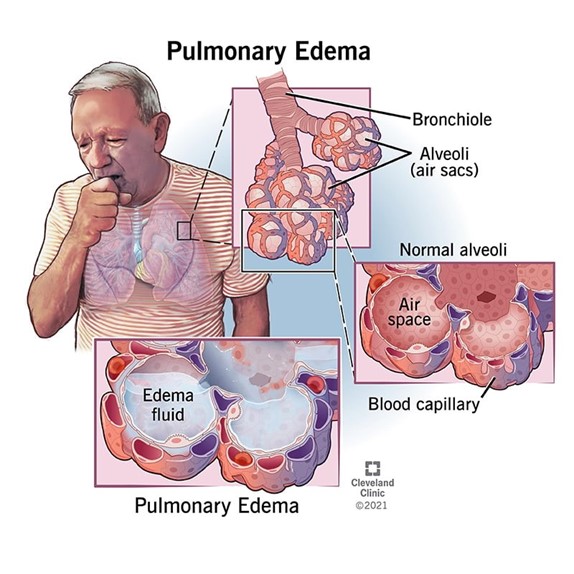Continuous increases in left ventricular filling pressures result in which disorder
Mitral regurgitation
Mitral stenosis
Pulmonary edema
Jugular vein distension
The Correct Answer is C
Continuous increases in left ventricular filling pressures can lead to pulmonary edema, which is an accumulation of fluid in the lungs. Mitral regurgitation, mitral stenosis, and jugular vein distension are all conditions that can occur due to increased pressures in the left ventricle, but pulmonary edema is the most likely result of continuously increasing pressures.

Nursing Test Bank
Naxlex Comprehensive Predictor Exams
Related Questions
Correct Answer is C
Explanation
Hyperventilation refers to an increased rate and depth of breathing, which results in excessive elimination of carbon dioxide (CO2) from the body. Carbon dioxide is an acidic gas that helps regulate the pH of the blood. When too much CO2 is lost through hyperventilation, it causes a decrease in the partial pressure of carbon dioxide in the blood (PaCO2), leading to a condition called hypocapnia.
Hypocapnia can cause symptoms such as lightheadedness, dizziness, and tingling in the fingers and toes.
Correct Answer is C
Explanation
In the normal electrocardiogram, the PR interval represents

The PR interval represents the time from the onset of atrial activation to the onset of ventricular activity. During this time, the electrical impulse travels through the atria, the atrioventricular (AV) node, and the bundle of His before entering the ventricles and initiating ventricular depolarization. Option A is incorrect because the atrial depolarization is represented by the P wave. Option B is incorrect because the ventricular depolarization is represented by the QRS complex. Option D is incorrect because there is no such term as “electrical systole” of the ventricles in ECG interpretation.
Whether you are a student looking to ace your exams or a practicing nurse seeking to enhance your expertise , our nursing education contents will empower you with the confidence and competence to make a difference in the lives of patients and become a respected leader in the healthcare field.
Visit Naxlex, invest in your future and unlock endless possibilities with our unparalleled nursing education contents today
Report Wrong Answer on the Current Question
Do you disagree with the answer? If yes, what is your expected answer? Explain.
Kindly be descriptive with the issue you are facing.
